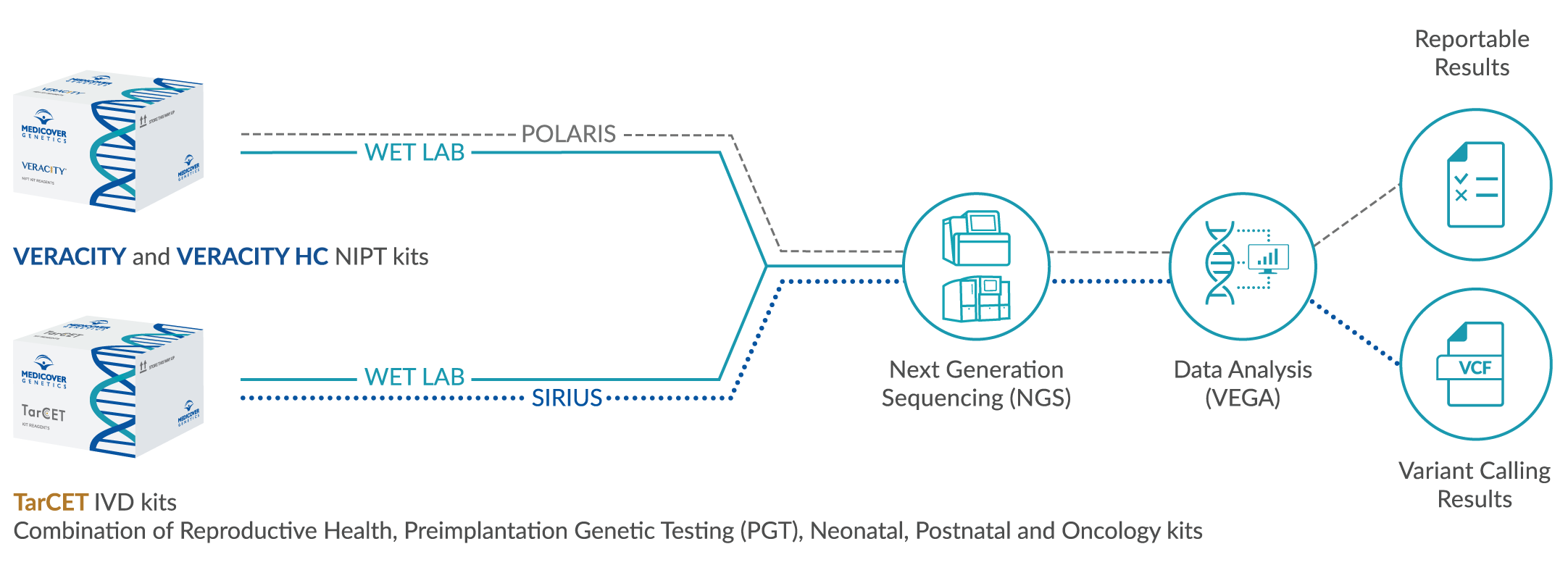Ovarian cancer accounts for about 3.2% of all malignant neoplasms in women and is responsible for 5.3% of cancer deaths. In most cases the tumors are diagnosed at an advanced stage, so that the relative 5-year survival rate is currently an average of 41%. Overall, 75% of all ovarian cancers are fast, aggressively growing tumors (high-grade serous carcinomas, mixed carcinomas and carcinosarcoma), which in turn are responsible for 90% of the mortality from ovarian cancer.
The risk of developing ovarian cancer increases with age and depends on various hormonal factors. In addition, familial clusters of certain tumor diseases (especially ovarian, breast, colon and/or endometrial carcinomas) represents an established risk factor. Independent of the family history or the age of the patient, the risk for a genetic predisposition is on average 20.8% (causal variants BRCA1 or BRCA2) or 25.8% (causal variants in BRCA1/2 or other risk genes). As a result, all women with ovarian cancer should be informed about the risk of a genetic predisposition and offered genetic counselling.
POSSIBLE THERAPIES
Patients with advanced epithelial ovarian cancer, carcinoma of the fallopian tube or primary peritoneal carcinoma (stage IIB-IV) receive platinum-based chemotherapy in combination with a taxane.
Olaparib (Lynparza®) has been approved by the EMA for maintenance therapy following a complete or partial response to first-line platinum-based chemotherapy, provided that a pathogenic or likely pathogenic variant in the BRCA1 or BRCA2 gene has been detected in the patient's tumor tissue or germline.
Olaparib is a PARP1 (poly(ADP-ribose)polymerase1) inhibitor that uses the principle of "synthetic lethality". Olaparib inhibits the repair of DNA single-strand breaks according to the base excision repair mechanism. These single strand breaks are transformed into double strand breaks by the collapse of the replication fork, which in turn are repaired by homologous recombination (HR) or non-homologous end-joining (NHEJ). If HR fails due to a mutation in a DNA repair gene involved in HR, such as BRCA1 or BRCA2, the error-prone NHEJ takes effect and the cells become apoptotic.
In recurrent platinum-sensitive ovarian/fallopian tube/peritoneal carcinoma with complete or partial response to platinum-containing therapeutics, olaparib can be administered as second‑line maintenance therapy regardless of the BRCA1/2 mutation status. Nevertheless, BRCA-mutated patients show a reduced risk of disease progression under Lynparza® compared to patients with an undetermined BRCA status (19.1 vs. 8.4 months).
TARGETED PANEL
BRCA1, BRCA2, ERBB2, PIK3CA, PTEN, Fusion Genes: NTRK1/2/3, RET, MSI





















